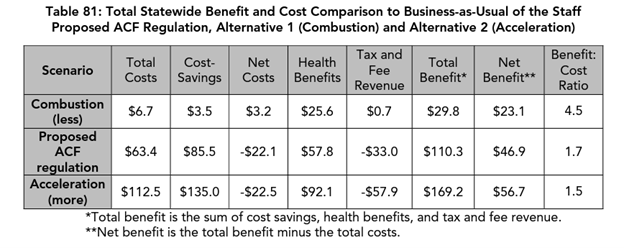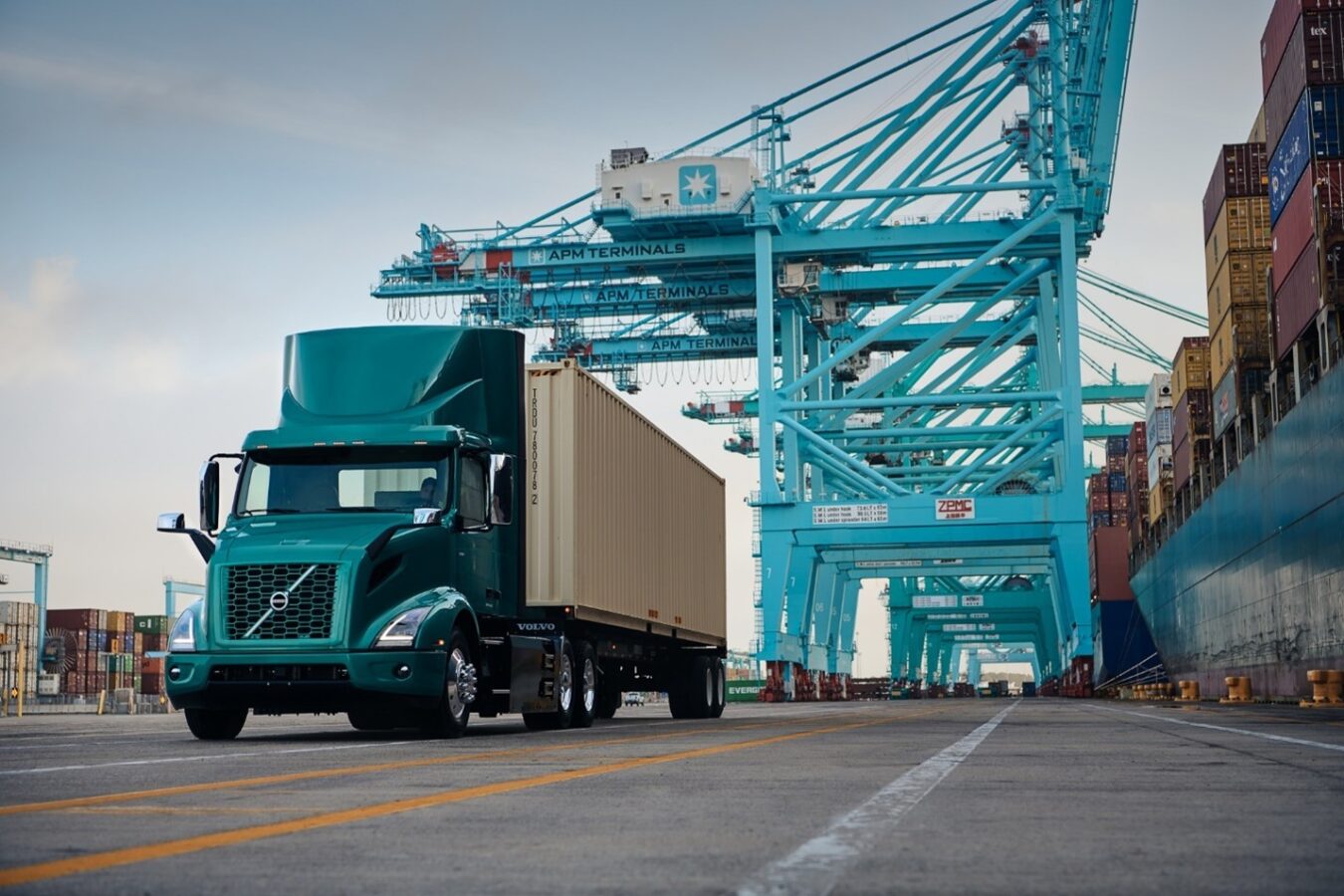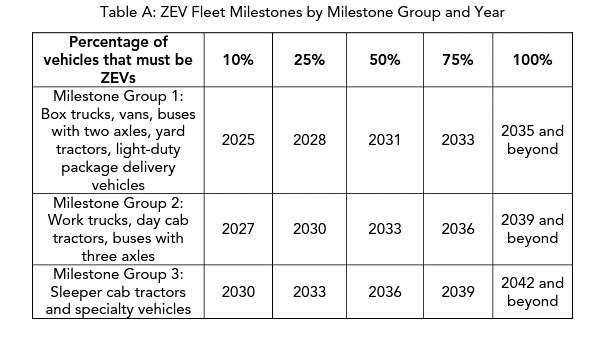Coming off its recent decision requiring all new passenger cars and trucks be zero-emission by 2035, the California Air Resources Board (CARB) is developing a first-of-its-kind regulation to reduce emissions from heavy-duty vehicles like delivery vans, big rigs, box trucks, and buses.
Now that California has taken the lead and set a goal for all passenger vehicles sold in the state to be electric by 2035, the next logical step is electrifying medium- and heavy-duty vehicles. This is an integral step towards cleaning our air and reducing climate-warming emissions.
California’s fleet of commercial trucks and buses is responsible for an outsized impact on air quality and climate change. There are more than 1.8 million medium- and heavy-duty trucks on California roads, and although they make up just seven percent of vehicles on the road, the state’s medium- and heavy-duty fleet is responsible for more than one-quarter of greenhouse gas (GHG) emissions, more than 60 percent of smog-forming nitrogen oxides (NOx) and more than 55 percent of lung- and heart-harming fine particulate (PM2.5) pollution from vehicles. Among this fleet of trucks and buses, tractor trucks are, by far, the most significant polluters – although just about 1 in 10 medium- and heavy-duty vehicles, they’re responsible for around half of all emissions from the state’s fleet.
The Advanced Clean Fleets (ACF) rule would require the largest, most profitable, and most polluting commercial fleets in the state to begin transitioning to electric trucks in 2024, eventually requiring that the state’s largest fleets purchase only 100 percent zero-emissions in 2042. The ACF also sets a shorter time frame for the state’s fleet of drayage trucks (those that move shipping containers at ports and railyards) to fully zero-emissions vehicles by 2035. The rule was prompted in part by Gov. Gavin Newsom’s 2020 executive order, which set a goal for the state’s heavy-duty vehicles to transition to zero-emissions vehicles by 2045, although the rule alone will not meet this goal.
The ACF continues the momentum that began last year when California adopted the nation’s first statewide sales standard for electric trucks, known as the Advanced Clean Trucks (ACT) rule. That rule requires truck manufacturers to produce and sell an increasing percentage of trucks, vans, and charter buses, while this new proposed rule would require fleet owners to buy an increasing percentage of zero-emission trucks, vans, and buses. The ACT has since been adopted by five other states – Massachusetts, New Jersey, New York, Oregon, and Washington.
How much pollution and emissions will the new rule reduce?
The ACF would significantly reduce climate-warming and other harmful emissions from commercial fleets operating in California. Compared to a baseline business-as-usual scenario, CARB estimates the ACF will reduce climate-warming emissions from the state’s truck fleet by more than 40 percent by 2050, equating to a reduction of about 300 million metric tons of carbon dioxide over this timeframe. This is roughly the equivalent of taking 66 million fossil-fueled cars off the road for an entire year. The rule would also reduce NOx and PM2.5 emissions from trucks by 43 and 29 percent, respectively. These reductions are particularly meaningful for communities disproportionately impacted by diesel emissions, such as those near ports and other freight terminals, which are often majority communities of color and economically disadvantaged.
All in all, the rule as currently proposed is estimated to have a net societal benefit of nearly $47 billion through 2050, accounting for significant reductions in health expenditures, savings to fleets from reduced fuel and maintenance costs, and costs to governments and businesses for the buildout of vehicle charging infrastructure.

The proposed truck rule would overhaul public and private fleets
The ACF includes four primary pillars, focusing on state and local public agency fleets, large commercial and federal fleets, drayage operations, and a continuation of the ACT rule requiring 100 percent zero-emissions truck sales by 2040.
Public Agency Fleets
Beginning in 2027, the ACF would require all new medium- and heavy-duty vehicles purchased by public agencies to be emissions-free, including large work trucks and vans, street sweepers, vacuum trucks, and other similar vehicles. The rule does include a few exemptions for vehicles like fire engines and other emergency vehicles, although they too are becoming increasingly available without tailpipes. The Los Angeles Fire Department recently made headlines when it received the nation’s first electric fire truck earlier this year and the truck has already been put to work.
Drayage Fleets
The ACF would also set electrification requirements for drayage fleets. California is home to several of the nation’s largest ports in Oakland, Los Angeles and San Diego, and thanks to our insatiable demand for foreign-made goods, coupled with fossil-fueled transportation, our freight system has significant negative health consequences for people living around these shipping hubs.
As currently drafted, the ACF would require that all new drayage trucks be zero-emissions after 2024, and only zero-emissions trucks will be able to perform drayage operations after 2035. Drayage operations are well-primed for electrification because they typically operate on fixed routes well within the range of the electric tractors available today and allow for central charging locations at ports and warehouses. This moves away from highly polluting diesel engines in port operations would substantially improve the air quality in port-adjacent communities like West Oakland and Long Beach.

100 Percent ZEV Sales Requirement
While the majority of the ACF applies to truck and bus fleet purchases, one piece of the regulation focuses on requirements for manufacturers of medium- and heavy-duty trucks, requiring that all trucks sold in the state be zero-emissions by 2040. This is effectively a continuation of the existing ACT rule, which plateaus its requirements in 2035.
Large Commercial and Federal Fleets
But the most far-reaching piece of the ACF is its zero-emissions fleet requirements for large commercial and federal fleets. As currently drafted, any fleet with more than 50 trucks and buses or $50 million in annual revenue would be required to begin transitioning its California fleet to zero-emissions trucks beginning as early as 2025. The speed of the timeline differs depending on the vehicle as some types of electric trucks, such as delivery trucks and vans, are more readily available from electric truck manufacturers and already beginning to hit the roads.

It’s time to electrify trucks and you can help
Regulations like the ACF are critical to ensuring that we make the transition to electric at the speed necessary to address both climate change and equitable access to clean air. Electric truck technology is here, manufacturers are ready, charging infrastructure is growing at a fast pace, market demand for zero-emissions vehicles is increasing, and incentives are available for fleets to electrify.
While ACF is a huge step in the right direction, we believe that there are several tweaks that could be made to the proposal to maximize the effectiveness of the rule including accelerating the 100 percent sales timeline to 2036 from 2040, lowering the threshold for Class 7 and 8 tractor trucks, and putting certain tractor trucks on a faster electrification timeline. CARB needs to hear support from communities impacted by unhealthy air quality, people concerned about climate change, and others who have a stake in clean air and a habitable climate (I’m pretty sure that’s about everyone).
CARB will consider this first ACF proposal at a public hearing on October 27, 2022 and a hearing for final adoption of the rule is expected sometime next year and are accepting written comments through October 17, 2022. UCS staff are working closely with CARB staff, Board Members, and many environmental, public health, justice, and labor advocates to push for the most effective, protective, and feasible rule. More information on the proposal and process can be found on CARB’s ACF webpage.

